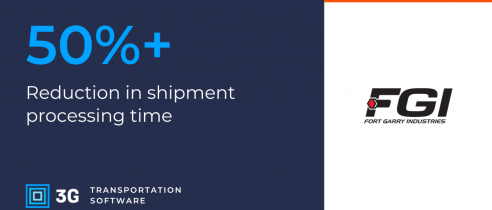Less-than-load (LTL) shipments are crucial for both large and small LTL shippers. For large shippers, LTL allows the efficient transportation of goods without the need to wait for a full truckload, optimizing delivery schedules and improving customer satisfaction. Small shippers benefit significantly from LTL as it enables them to send goods promptly, even with limited quantities, ensuring they remain competitive and responsive to customer demands. By incorporating LTL, companies can reduce inventory holding costs, enhance supply chain flexibility, and cater to diverse shipping needs, making it a vital component of a successful logistics strategy for businesses of all sizes.
However, as shipping volumes continue to increase, it’s becoming harder to manage LTL shipments effectively. LTL optimization strategies are critical for companies to continue utilizing this shipping mode efficiently and maximize cost savings.
5 Tips for LTL Optimization to Control Costs
With so many moving parts involved in LTL shipments, it’s easy for cost savings and efficiency opportunities to fall through the cracks and require much more time and money than necessary to execute. What can stakeholders do to minimize costs and realize the most benefit from this shipping mode? Here are four tips for LTL optimization:
Consolidate Loads
Consolidating orders into as few shipments as possible can generate massive savings on fuel and labor expenses. Whenever possible, batch similar shipments together, combining orders with similar origins, destinations, and delivery schedules to streamline routing and minimize handling. This benefits carriers as well by allowing them to service more customers in less time.
Optimize Cargo Capacity Utilization
Beyond load consolidation, maximizing cargo capacity utilization in each trailer is a critical ingredient for LTL optimization. Package shipments to take up as little space as possible so more goods can fit in each truck. At the earliest stages possible, work with packaging designers to minimize cubic volume and improve stackability to take advantage of the height as well as the width of a trailer. Parcel and pallet dimensioners can help planners get the most accurate measurements and pre-plan loads before the day of shipment.
Use Multi-Mode Shipment Planning
Another area for optimizing LTL shipments is in utilizing automated planning with advanced algorithms to maximize cost-efficiency and service quality. These intelligent planning tools can determine the most suitable mode for each shipment—whether LTL, truckload, parcel, or a combination of these—based on real-time data, delivery constraints, and predictive analytics. By leveraging advanced mapping software, shippers can visualize the landscape and identify the most efficient routes, significantly reducing fuel costs and labor expenses. Automated planning also optimizes multi-stop routes, enhancing load consolidation, lowering transportation costs, and improving delivery times. Implementing these algorithm-driven strategies increases throughput and creates opportunities for higher revenue as shipping volumes scale, ensuring that shippers use the right mode at the right time for optimal results.
Approach Planning Collaboratively
At its best, LTL shipping isn’t just about cost savings and efficiency gains for one company — it benefits the carrier and their other customers as well. With LTL consolidation, shippers benefit from sharing the cost of transportation, and carriers generate more revenue by improving their efficiency. Sharing information about shipment volumes, delivery schedules, and inventory availability can help other stakeholders identify opportunities to save time and money on their own related shipments, driving down costs for both parties.
Collaborative planning also amplifies the impact of load consolidation, space utilization, and routing. What’s more, this collaborative approach enhances overall supply chain efficiency, benefitting the entire industry, as well as end-users and consumers.
Leverage Multi-Carrier Access
Utilizing LTL shipping strategies effectively requires diligent research to compare rates and services from different carriers. This is the only way shippers can find the best options for their specific needs. A multi-carrier approach also empowers shippers to negotiate better rates based on volume commitments and optimize cost savings by selecting the most competitive carrier for each route or shipment type. In fact, shippers that utilize a multi-carrier strategy can realize 20% to 30% savings on shipping costs.
Streamline LTL Optimization with the 3G Transportation Suite
Every single one of these tips involves analyzing an incredible amount of data, making them virtually impossible to follow when relying on manual systems in today’s environment. Even with standalone software for transportation management, it can be difficult to design processes efficiently enough to truly maximize the potential cost savings inherent in LTL optimization. What shippers really need is an end-to-end transportation suite to gain full visibility into their supply chain, shipping options, and carrier performance metrics.
That’s where 3G comes in. The industry-leading software is a comprehensive suite that helps users optimize every aspect of transportation management, shipping, and carrier selection — with tools specifically designed for LTL optimization. Experience the difference with 3G by scheduling a demo today.








